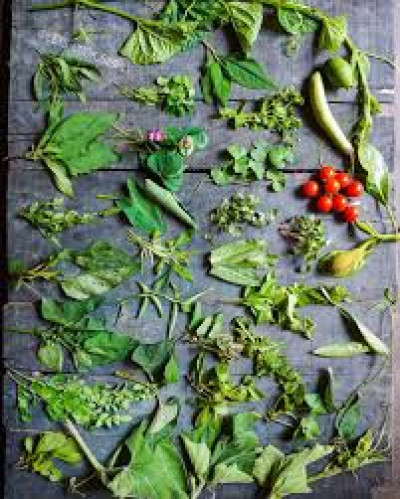What Is 101 Xaak Or Haak Axxo Ek Bidh Xaak (hundred And One In Assam? Significance In Goru Bihu And List Of Assamese Leafy Greens



"101 Xaak" literally means "101 types of greens." While the exact number may vary, the phrase represents the vast assortment of wild and cultivated leafy vegetables that Assamese people gather from fields, forests, and home gardens. These greens are nutrient-rich, offering a healthy balance of vitamins, minerals, and antioxidants.
A list of 101 xaak or haak herbs with their vernacular names is given below:
Piyaz(Alium cepa)
Nohoru(Allium sativum)
Sal kuwori(Aloe vera)
Tora(Alpinia nigira)
Mati kaduri(Alternanthera sessilis)
Pani khutura(A.philoxeroides)
Hati khutura(Amaranthus spinosus)
Khutura(A. viridis)
Kalmegh(Andrographis heterophyllus)
Kothal(Bacopa monnieri)
Moha neem(Bambusa balcooa)
Brahmi(Basella alba)
Bholuka baah(benincasa hispida)
Puroi sak(Boerhavia diffusa)
Kumura(B.juncea)
Panarnawa(Brassica nigra)
Lai sak(Calamus erectus)
Soriyah(Centella asiatica)
bet gaz(Chenopodium album)
Bor manimuni(Chrysanthemum coronarium)
Bali bhotora(Cinnamomum bejolghota)
jil mil(C.tamala)
babori(Clerodendrum colebrookianum)
pati hunda(C.serratum)
Tez paat(C.viscosum)
Nephaphu(Colocasia esculenta)
Nangal bhanga(Commelina benghalensis)
Dhopat tita(Corchorus capsularis)
kochu
kona himolu
Tita morma
Mahudi
Ronga lau
Halodhi
Surat gas
Ou tenga
Dhekia
Lai jabori
Goru khis
Keha raj
Heloshi
Man dhoniya
Gakhiroti
Sutiya lofa
Makhioti
Mahi thekera
Khujithekera
Bor thekera
Bon jaluk
Tenga mora
Moshundari
Horu mani muni
Kolmou saak
Dupor tenga
Jati lau
seng mora
jetuka
durun
kasi doriya
digh loti
jika
bhol
kopou dhekia
phutkola
beli poka
podina
tita kerela
bhat kerela
haru meteka
Anshu gas
sojina
nuni
Norosingha
Kol gas
sukloti
podum
sewali
bhet phul
bon tulsi
horu tengeshi
Bor tengesi
bhedai lota
tita phul
amlokhi
pipolee
arni pan
singa paat
hukloti
bon jaluk
modhu huleng
hanh thengia
malbhug khutura
thereju tenga
modhuri
jetuli poka
meshangi
til
tikoni barua
tita bhekuri
bengana
tez moi